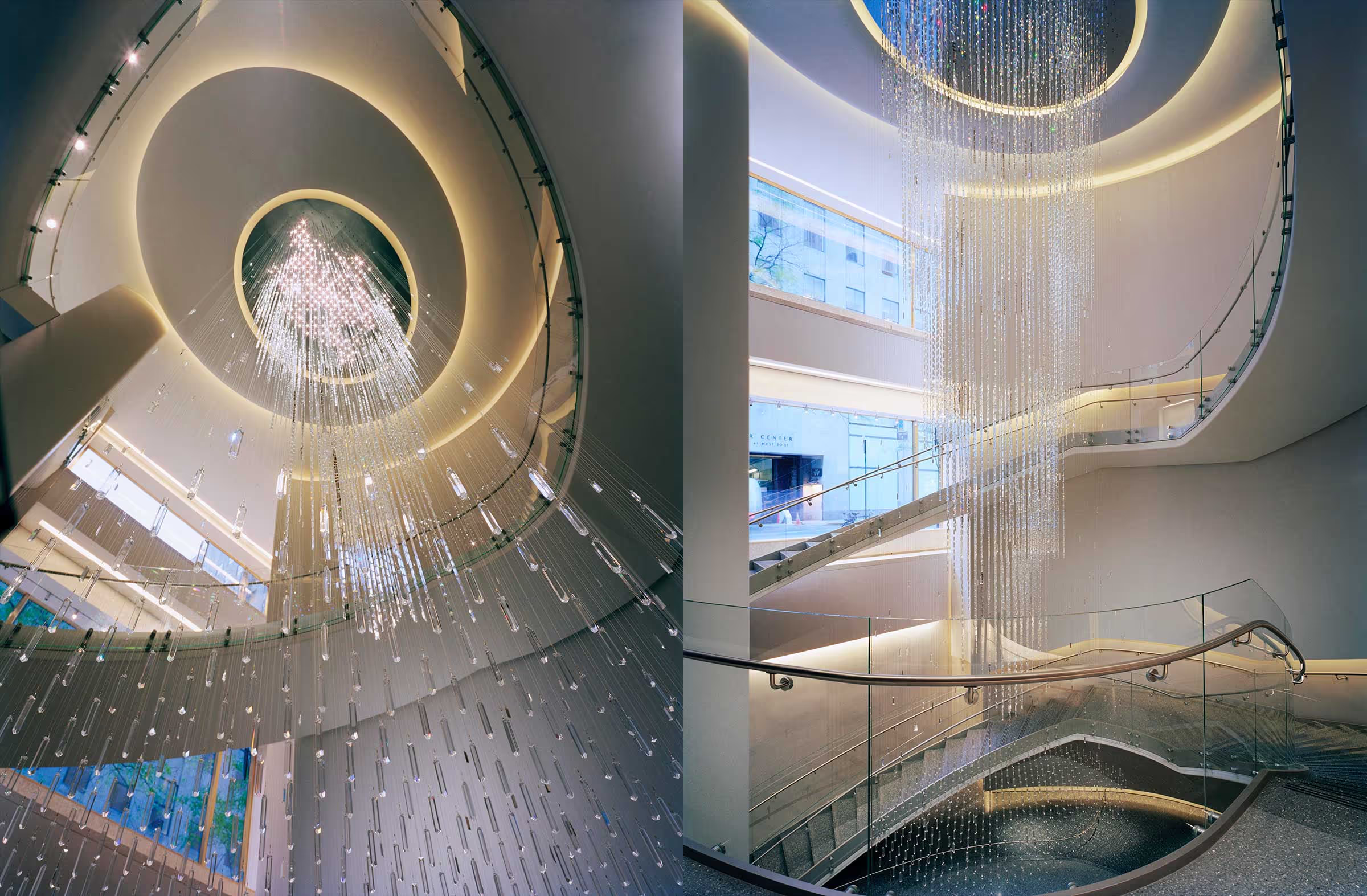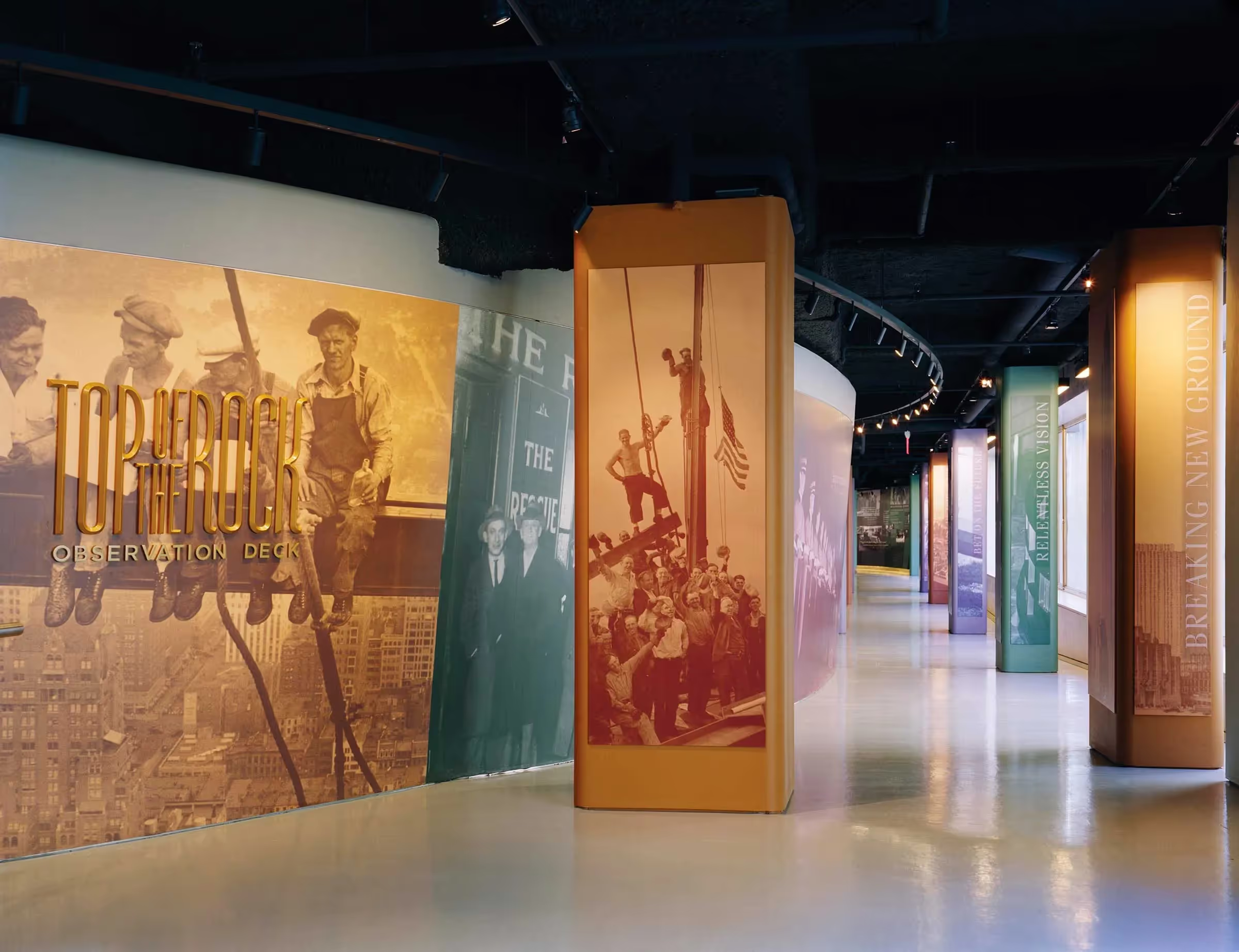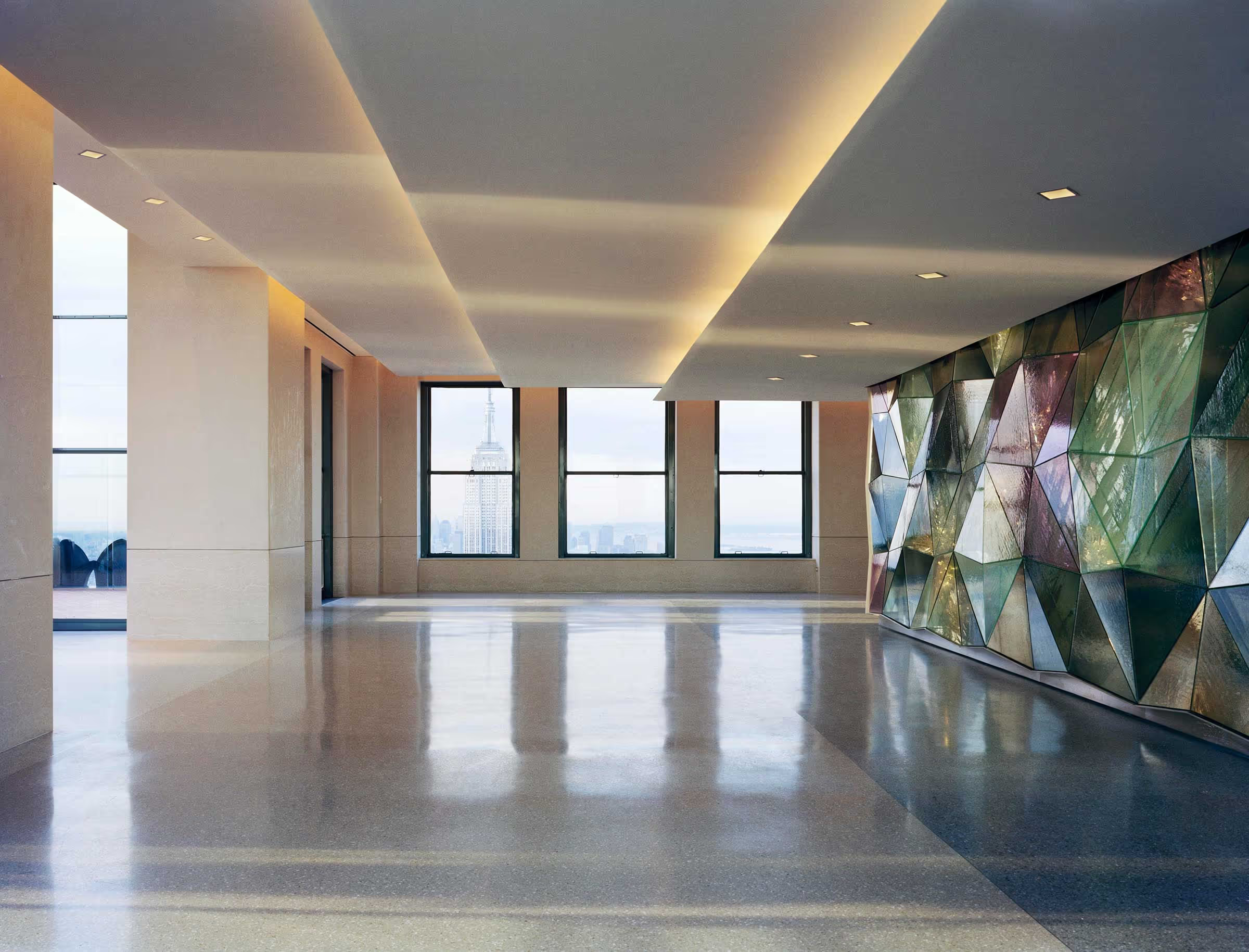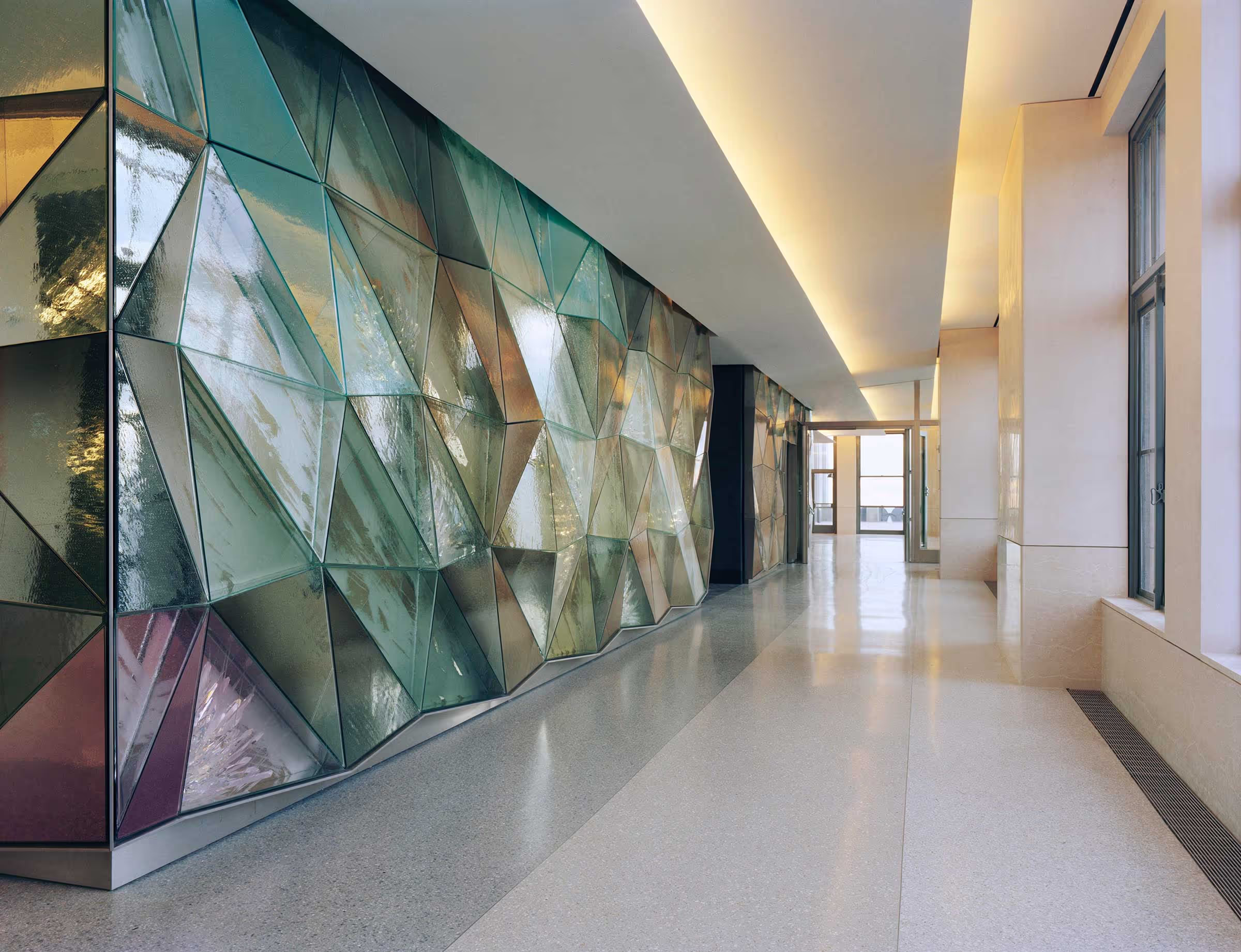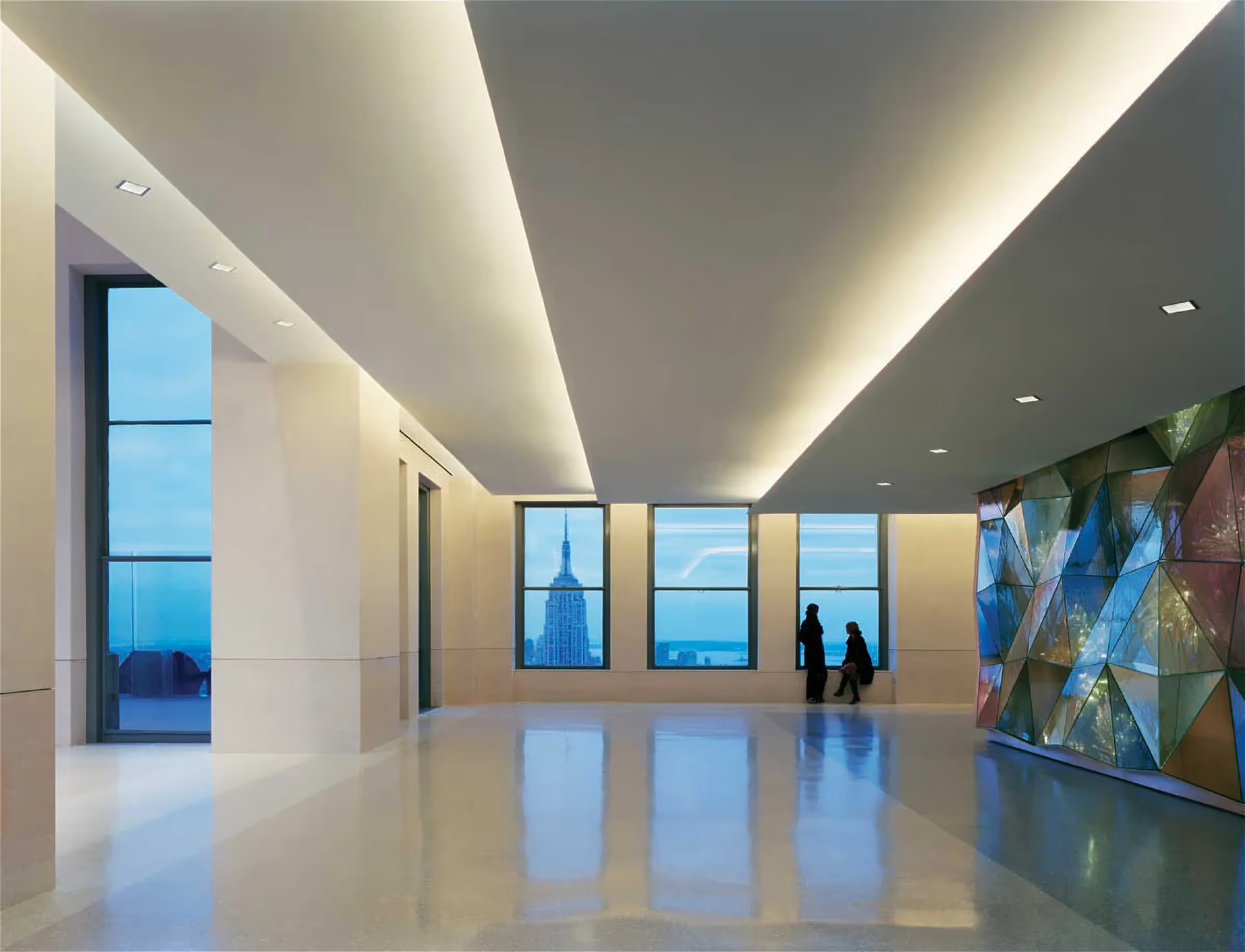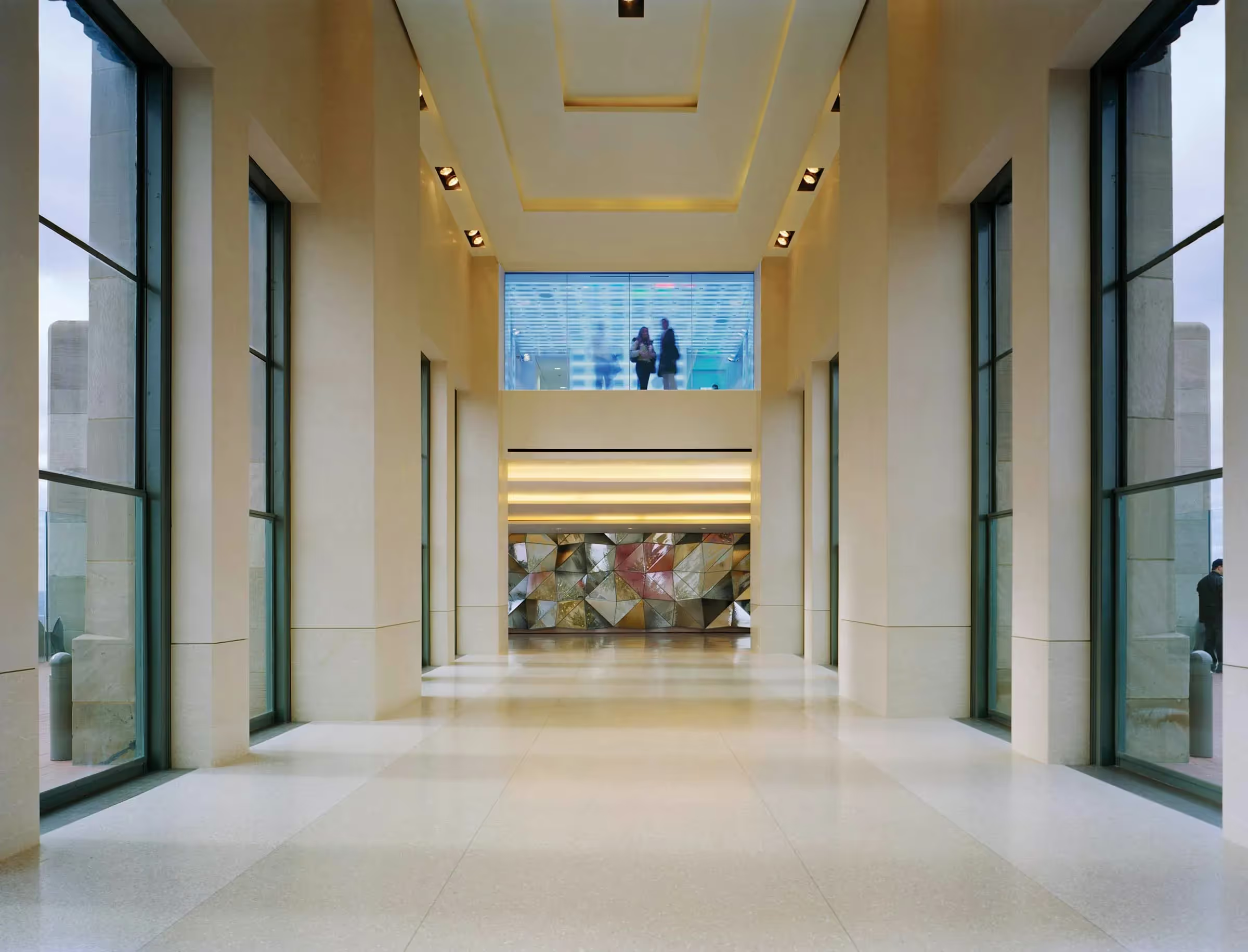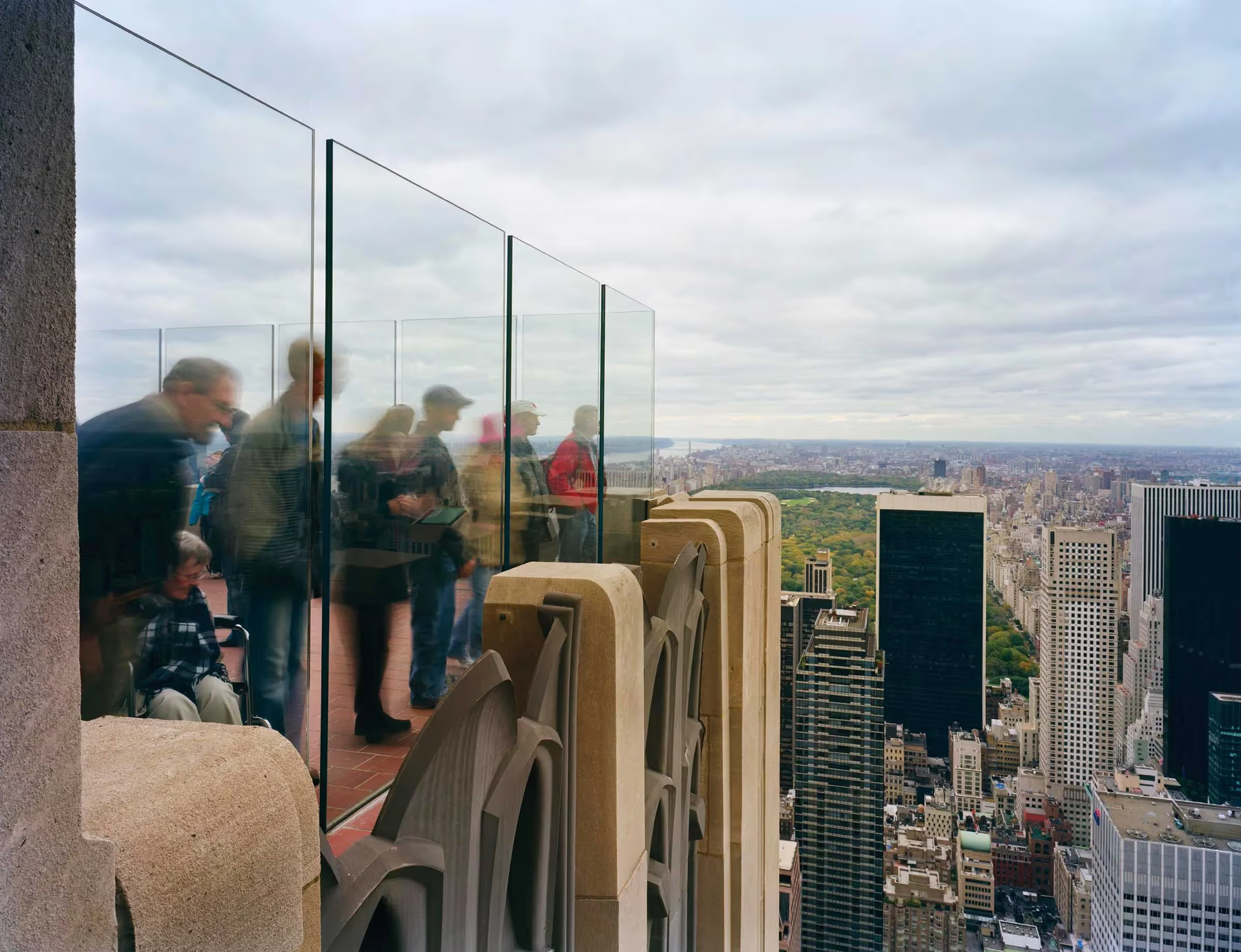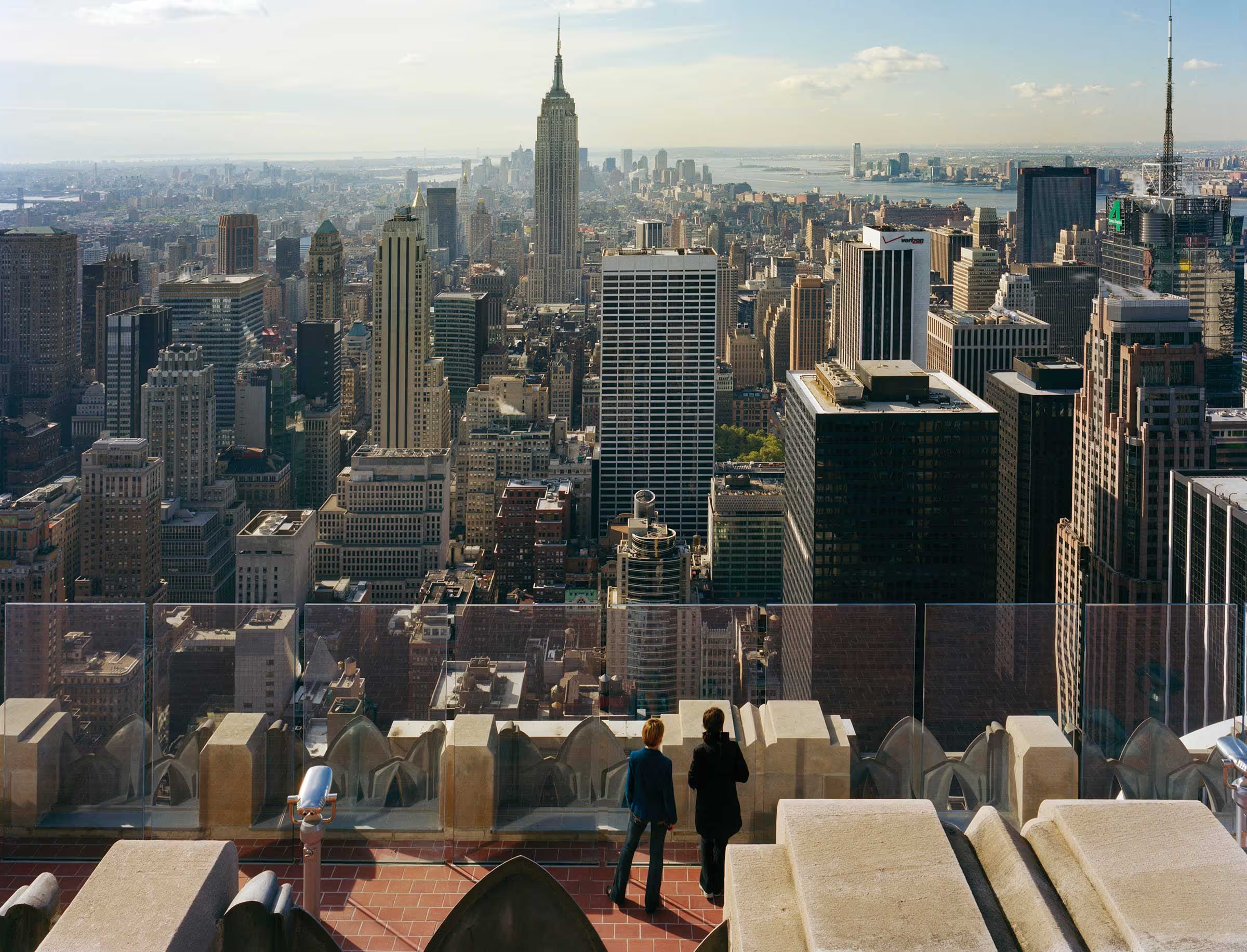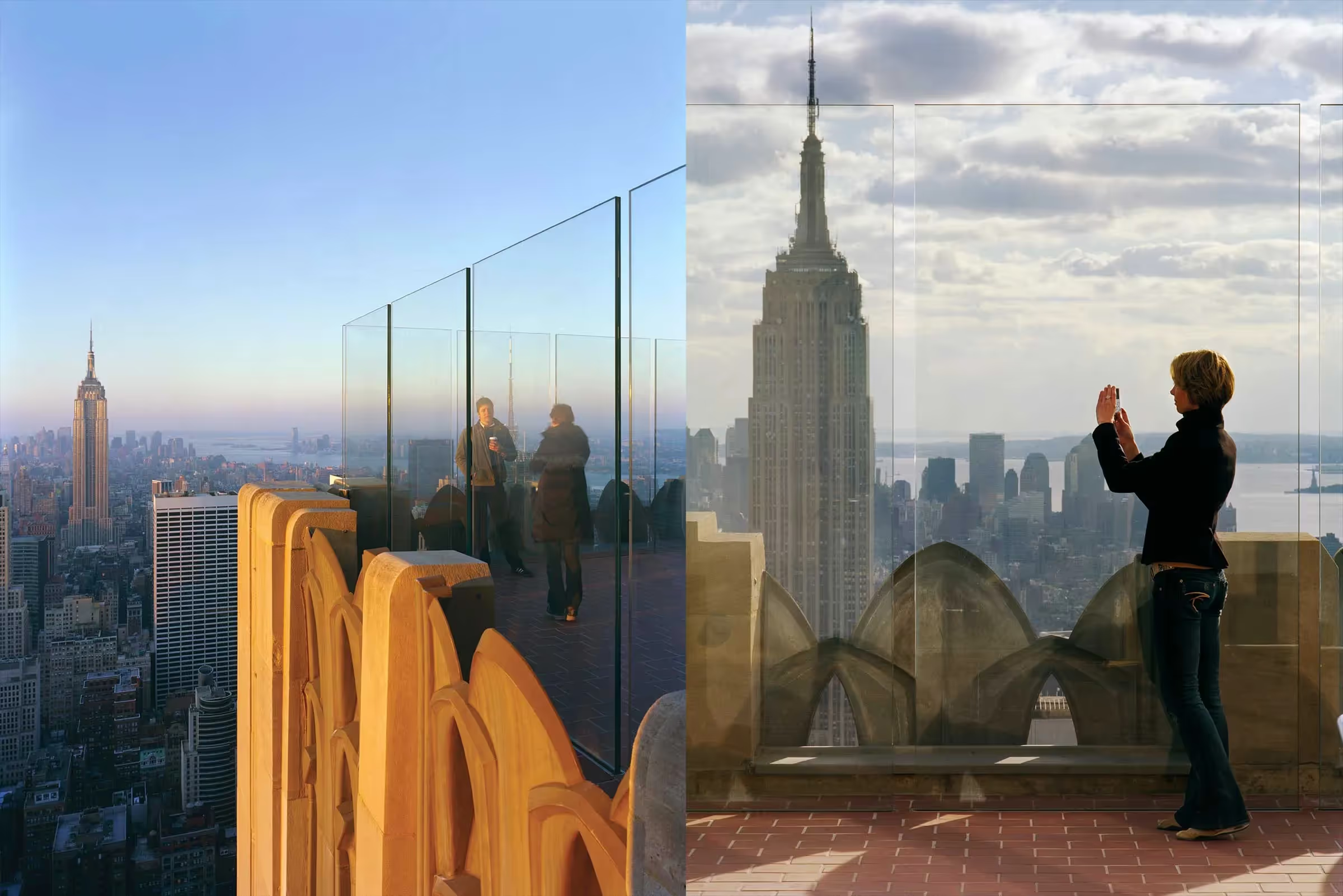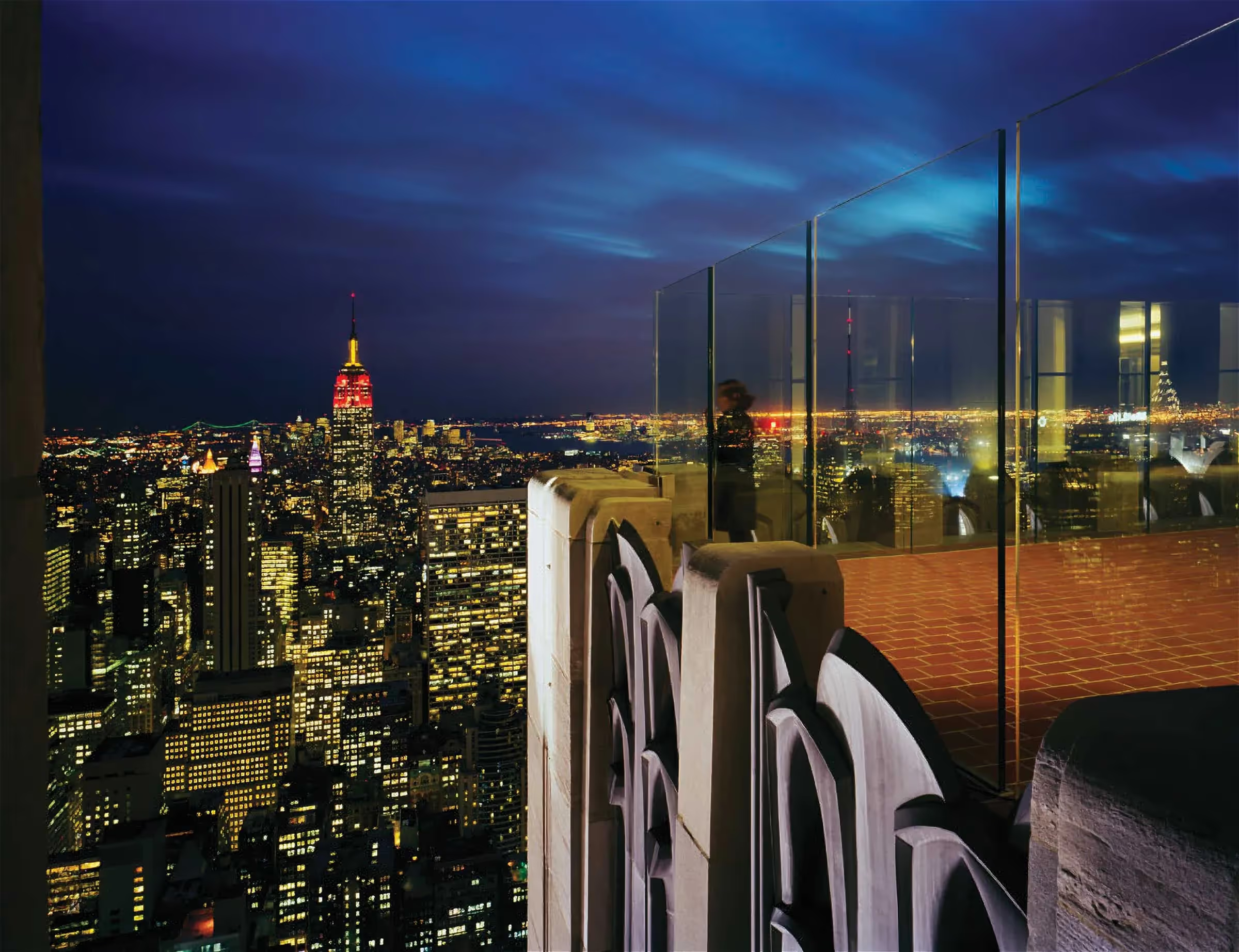Top of the Rock
New York City
Top of The Rock opened a progressive new chapter in the narrative of New York’s preeminent urban living room: Rockefeller Center. This ground-to-sky visitor experience spans three lower levels, three upper levels, and 55,000 square feet within the iconic 30 Rockefeller Plaza, originally designed by Raymond Hood in 1933. A designated historic Landmark since 1985, the 70-story building is home to GE offices, NBC studios, and the Rainbow Room restaurant as well as an underground retail Concourse with public transit connections.
The new triple-height ticketing atrium with public street entrance and elliptical stairs was inspired by the expressive grandeur of Rockefeller Center’s original 1930s lobbies. Carved from a non-historic office and retail space, it is punctuated by Joie, a hovering crystal light sculpture designed by Gabellini Sheppard Associates. The chandelier tapers downward as an inverted, diaphanous Art Deco skyscraper. Overlapping, backlit walls of architectural plaster curl around the stair in an upward helical spiral. Subtly gradating in color from black at the base to pale gray at the top landing, terrazzo stair treads add to the sweeping sense of ascension. A gradual lightening of wall paint from bottom to top further heightens this subliminal movement. On the Mezzanine Level, a new exhibition and theater space engages visitors before they board high-speed “sky shuttle” elevators. These glass-ceilinged capsules reveal the original 800-foot elevator shaft, which is dramatically lit with sapphire-blue runway lights.
The daylight-infused 67th Floor Grand Viewing Room was reclaimed from utility spaces packed with obsolete mechanical and broadcasting equipment. Surrounding the elevator core, another site-specific art piece designed by the firm—Radiance: Swarovski Crystal Geode Wall—revives the Art Deco era’s flamboyant experimentation with surface geometry and industrial arts. Conceived as an elongated Fresnel lighthouse lens, Radiance pays homage to Rockefeller Center’s renowned artisanal tradition of sculptures, murals, and architecture. Natural light plays upon the 600 prismatic facets while embedded fiber optics glow from within. To produce the wall’s multi-layered, etched surfaces, traditional art glass fabrication techniques were used alongside new technologies for cutting, mapping, and layering glass and crystal. At the eastern end of the 67th Floor lies the Weather Room, a triple-height space proportioned as a chapel. Perimeter walls of limestone and architectural plaster reference the exterior limestone facade. Three colors of honed terrazzo radiate from the center to the perimeter.
A new, open-air escalator atrium links the 67th Floor interior to the 69th Floor Grand Viewing Terrace encircling the north, west, and south sides of the building. Outside on the restored and renovated observation decks, clear optical glass panels function as subtly as rimless eyeglasses, preserving the building’s original appearance while providing the purest possible viewing experience. The laminated, double-layered glass panels—capable of withstanding hurricane-force winds—allow viewers to appreciate the original architectural details of cast aluminum and limestone. The uncannily serene and intimate, the 850-foot-high high plateau of the 70th floor evokes the upper decks of a 1930s ocean liner floating high above the metropolitan sea.
Photography by Paul Warchol.


